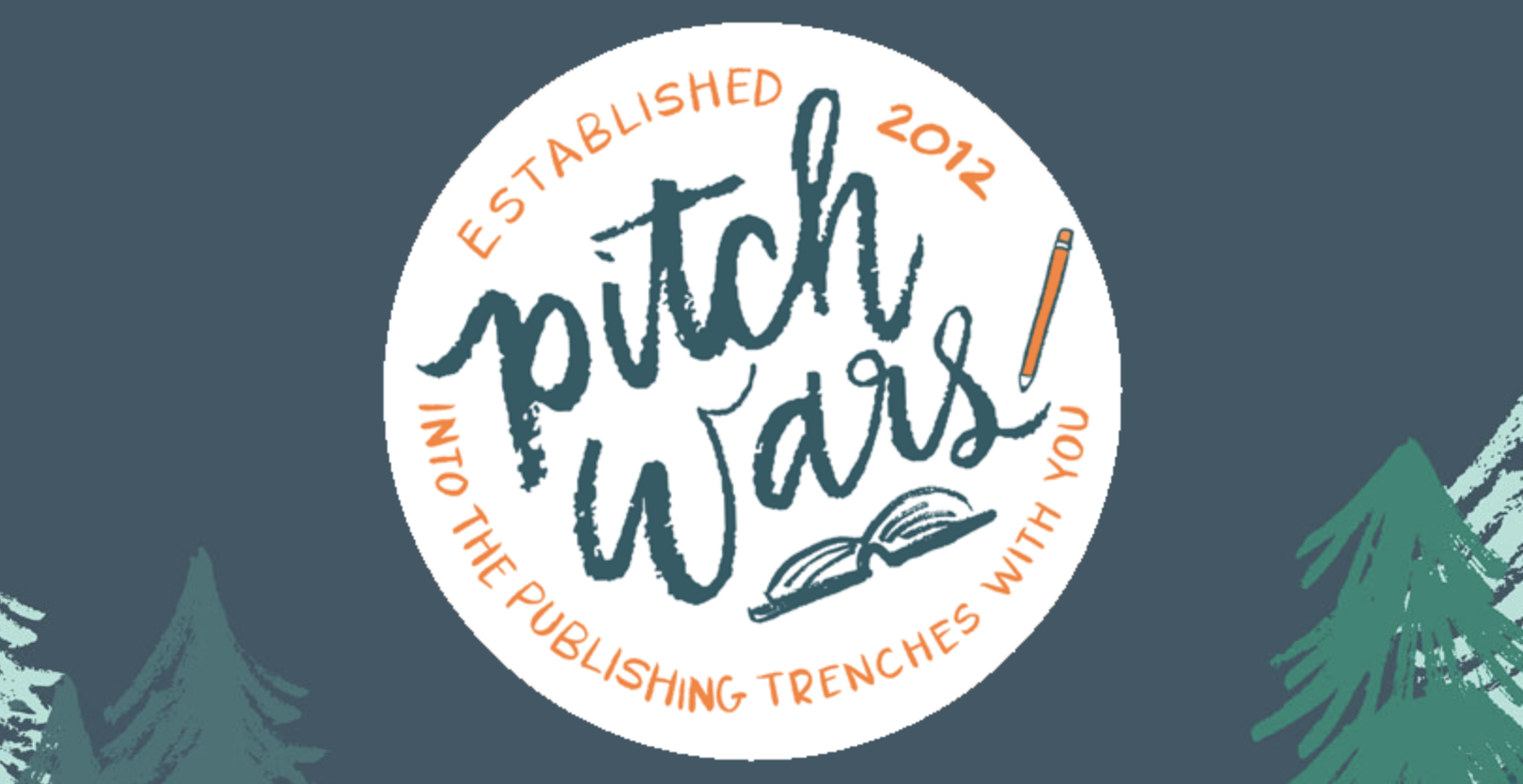 This past Friday night, between bouts of puking my guts out (thank you, ill-timed stomach flu), I submitted my entry materials for this year’s #pitchwars competition. Now, as I await news… or silence… or whatever, I thought I’d distract myself by writing up a quick blog post.
This past Friday night, between bouts of puking my guts out (thank you, ill-timed stomach flu), I submitted my entry materials for this year’s #pitchwars competition. Now, as I await news… or silence… or whatever, I thought I’d distract myself by writing up a quick blog post.  Quick being the operative term because I’m still fending off this vicious stomach bug and it’s difficult to type with my arms wrapped around this giant “just-in-case” mixing bowl in my lap.
Quick being the operative term because I’m still fending off this vicious stomach bug and it’s difficult to type with my arms wrapped around this giant “just-in-case” mixing bowl in my lap.
So, let’s talk about the Pitch Wars organization because what else would I want to talk about while trying not to think about it?
What is Pitch Wars and How Does it Work?
 If you’re unfamiliar with the organization, pop over to their website and have a quick peek. Pitch Wars was started by author Brenda Drake back in 2012. I heard about it when a fellow Lesley University alumna tried out for the competition in 2017 (or 2016, I can’t quite remember) and got in. She had an incredible experience working with her mentor. So, when I was working to finish the draft of my thesis manuscript in 2018, she encouraged me to try out, too.
If you’re unfamiliar with the organization, pop over to their website and have a quick peek. Pitch Wars was started by author Brenda Drake back in 2012. I heard about it when a fellow Lesley University alumna tried out for the competition in 2017 (or 2016, I can’t quite remember) and got in. She had an incredible experience working with her mentor. So, when I was working to finish the draft of my thesis manuscript in 2018, she encouraged me to try out, too.
To sum up, the organization offers aspiring (read unpublished) writers a chance to work with a mentor (read published and agented author) to revise a completed manuscript in preparation for an Agent Showcase (happening in February this year). If an agent likes what they see during the showcase, they may request a query and first pages. It’s an incredible way to build community, connect aspiring writers with established writers, hone craft skills, make friends, and perhaps even launch careers. It’s also insanely popular. This year, over 3,500 aspiring authors tried out.
Here’s the big ol’ donkey kick to the abdomen for applicants, though. They can only submit to FOUR participating mentors, and most mentors get well over 100 submissions. Some get upwards of 400 submissions! Still, nothing ventured, nothing gained.
My First Attempt at Pitch Wars:
 As I said earlier, I tried out in 2018. Alas, I did not get in, but the experience still carried tremendous benefits for me.
As I said earlier, I tried out in 2018. Alas, I did not get in, but the experience still carried tremendous benefits for me.
For one, it kept me from stalling on a manuscript I was struggling to finish. You see, Pitch Wars requires applicants have a full manuscript completed, and fear of not getting the end of my novel absolutely perfect had been paralyzing me from writing the third act. The Pitch Wars competition was just the motivation I needed to get over my fear of a terrible first draft. Good, bad, or ugly, I got the damned thing done.
Which, by the way, is kind of the whole point of Pitch Wars. The organization pairs up established (and agented) authors who have walked the path new writers are trying to walk. They have written their own terrible first drafts. They’ve revised them, no doubt multiple times. They queried agents and did so successfully. Many of them did so as Pitch Wars mentees, and now they’re paying it forward as participating mentors despite being super busy promoting debut books of their own and writing their next novels.
 So, I didn’t get accepted, but I got motivated. Actually, I then used all of NaNoWriMo18 to revise the beast! Huzzah!!
So, I didn’t get accepted, but I got motivated. Actually, I then used all of NaNoWriMo18 to revise the beast! Huzzah!!
Pitchwars, Take Two!
As I said on my #BoostMyBio page, I’m nothing if not persistent. A year has passed and a lot has happened since last fall. That includes revisions of my manuscript. I’ve got strong feelings about my story. I’m not ready to give up on it yet. So, I’m trying out for Pitch Wars yet again. The manuscript still needs work, and the competition is a chance to work on it with someone who knows a lot more about the publishing industry than I do.
A mentor who shall remain nameless (but whom I am keeping my fingers crossed picks me to mentor) put it succinctly when she tweeted that she’s not looking for perfect. A perfect manuscript doesn’t need grooming with a guiding mentor. She’s looking for an imperfect manuscript with potential. A diamond in the rough, so to speak. I paraphrased all of that, by the way.
If I Don’t Get In… Again?
 Then, at least I will have tried. And, it won’t mean I stop working on the manuscript. It just means I’ll be revising solo instead of with the guidance of an established author. Is one scenario preferable to the other? Sure, but you get what you get and you don’t get upset, as my kids’ favorite saying from camp goes.
Then, at least I will have tried. And, it won’t mean I stop working on the manuscript. It just means I’ll be revising solo instead of with the guidance of an established author. Is one scenario preferable to the other? Sure, but you get what you get and you don’t get upset, as my kids’ favorite saying from camp goes.
If you, like me, are an aspiring writer with a finished manuscript and dreams of landing an agent who will help turn that manuscript into a fully realized book, I urge you to investigate Pitch Wars and try out. There’s nothing to lose and so much to gain, even if you don’t get chosen.
Thanks for stopping by, and as always, happy writing to you.





